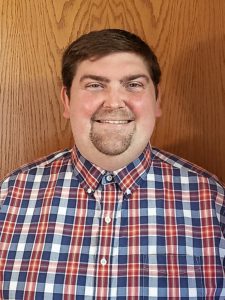community ties
By Michelle Dellinger
Appears in the May 2021 issue.

As a neuropsychologist responsible for Little Friends’ outpatient services, Bradford Czochara sees his new role there as largely consultative in nature. He encourages families with loved ones—of any age—on the autism spectrum to use the resources and support from the nonprofit organization.
“With a lot of our current programs and those that we’re trying to create, such as improv groups and neuro feedback,” says Czochara, “we try to create a community and a connection with family. We’re helping them with a journey—autism doesn’t go away with age. As the child goes from preschool to high school to independent living, we try to provide a central support network.”
Little Friends provides therapy, diagnostic and evaluation services, as well as parent support programs for local families. As a member of the Autism Program of Illinois (TAP), it’s one of four universities and 11 organizations with 20 centers across the state that serve children, families, educators, childcare providers, and medical professionals who specialize in the autistic population.
Due to the complex nature and individuality of families seeking treatment options, Czochara emphasizes the need to coordinate resources for families. “We try to help when we can with consultative services or organizations,” says Czochara. “The Arc of Illinois has been a great connection point that we’ve used before,” he says, referring to the statewide advocacy agency for those with disabilities. “We try to have a variety of staff provide a multitude of resources for parents,” he says, “to connect them to someone who can help.”
Families also benefit from Little Friends’ move from downtown Naperville to a new facility on Diehl Road in Warrenville this January. Czochara says the biggest advantage of the new building is being on one level. “Our old building had multiple levels with stairs, which was hard on staff working with kids with motor issues. Everything is now on one floor, and this building is easier for parents to drop off kids and navigate,” he says.
Upgrades to sensory activities and occupational therapy, along with technology, provide more treatment options for its school, outpatient, and residential services.
When asked about advances in autism treatment, Czochara references genetics and neurofeedback. “There are a lot of genetic identification symptoms that we can use to customize treatment plans through pharmacogenetics,” he explains. “Some people respond better to different therapies. I also think there is something to neurofeedback. We can help the brain reorganize itself, or make new connections, so that it’s even
more efficient to help with sensory, attention, and behavioral issues through a safer, nonmedical method.”
Photo courtesy Brad Czochara


